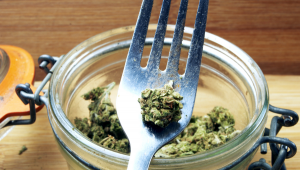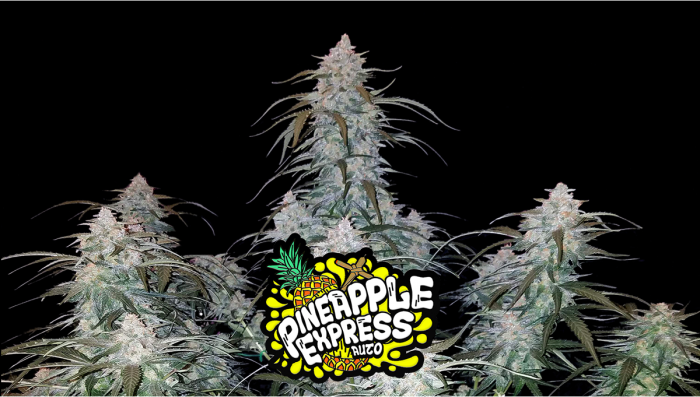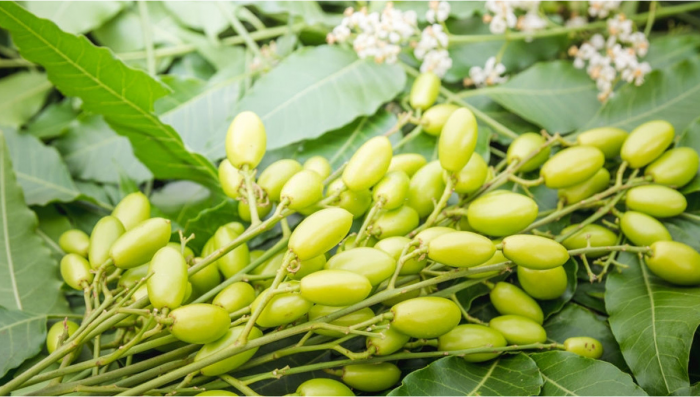
How to Compost and Make Super Soil for Cannabis Plants
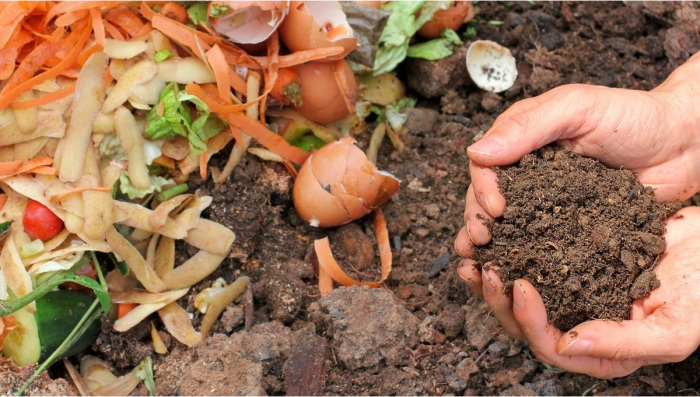
- 1. Getting started
- 2. What can you compost?
- 3. 3-bin system
- 4. What's next?
This is for you cannabis purists out there. If you are interested in recycling, if you have used the words ‘Mother Nature’ lately or if you just want to feed the best to your spoilt baby seedlings: composting might be for you. Let's have a look at Cannabis Super Soil. Composting is a cheap and effective way to provide your autoflowering marijuana seeds with a constant supply of nutrients, keeping the cannabis supper soil and its resident microorganisms in great health. In the process of organic cannabis seeds growing you are creating soil full of life and the idea is that you are managing its' ecosystem instead of the plant. To enrich it you will need to care for microbes, fungi and other beneficial organisms that will play a role in breaking down the nutrients that plants need; just like it happens in nature.
As long as the organic soil is healthy and taken care of in its initial stage, you will be free! You won’t have to worry about the pH, PPMs or extra nutrients for your buds. With cannabis super soil you can just sit back and watch your plant turn into a beauty, a natural beauty. But what exactly is compost? Is it the same as soil? How does it benefit plants? And how should you use it? Once you have an idea about the answer to these questions, you’ll be fully equipped to implement one of the most effective and cheapest means of bringing incredible fertility to your grow room and garden.

So, let’s start off with what compost actually is; it looks like soil, but they’re not the same thing. The soil you find in the ground outside is composed of three primary fractions: sand, silt, and clay. A combination of these substances is referred to as loam. All soils have a slightly different percentage of these parts, which gives them different properties. For example, clay soils hold on to nutrients and water well, but are more prone to waterlogging. Sandy soils drain water very well, which also means they can dry out too quickly in a warm climate.
Finally, soils also contain varying levels of soil organic matter (SOM). This fraction of the soil includes living and once-living organic matter, such as bacteria, fungi, protozoa, worms, and the decomposed remains of plants, animals, and animal excrement. This is where compost comes in—it’s essentially a form of SOM that’s created in a controlled environment. Creating compost in bins, outside of garden beds and pots, helps to accelerate the process of decomposition. Ultimately, compost contains many of the nutrients that plants need to grow. It also serves as an inoculant by introducing beneficial microbes into the soil that assist nutrient cycling. Much like clay, compost also holds a net negative electric charge, meaning it can hold on to certain nutrients and prevent them from leaching.
Getting Started
You will need 1-3 compost bins or equivalent, outdoors. A bin can be purchased or easily built with little imagination needed. Most DIY options use materials such as non-treated wooden pallets. Bins with lids that retain moisture will help the compost to break down faster. DIY Compost Bins for Super Soil - Cannabis
Locate a space outdoors that receives nearly uninterrupted shade for the recreation of an optimal environment. If possible, place the bin directly on top of existing natural soil for drainage and access to surrounding microorganisms. A smart option is to have a smaller extra composting bin indoors to fill with daily biodegradable waste like food scraps, vegetable remains, eggshells or leftover bread crumbs. This way we can empty the smaller bin into the composting bin and stir both mixes into what will become a rich cannabis super soil.
What can you compost?
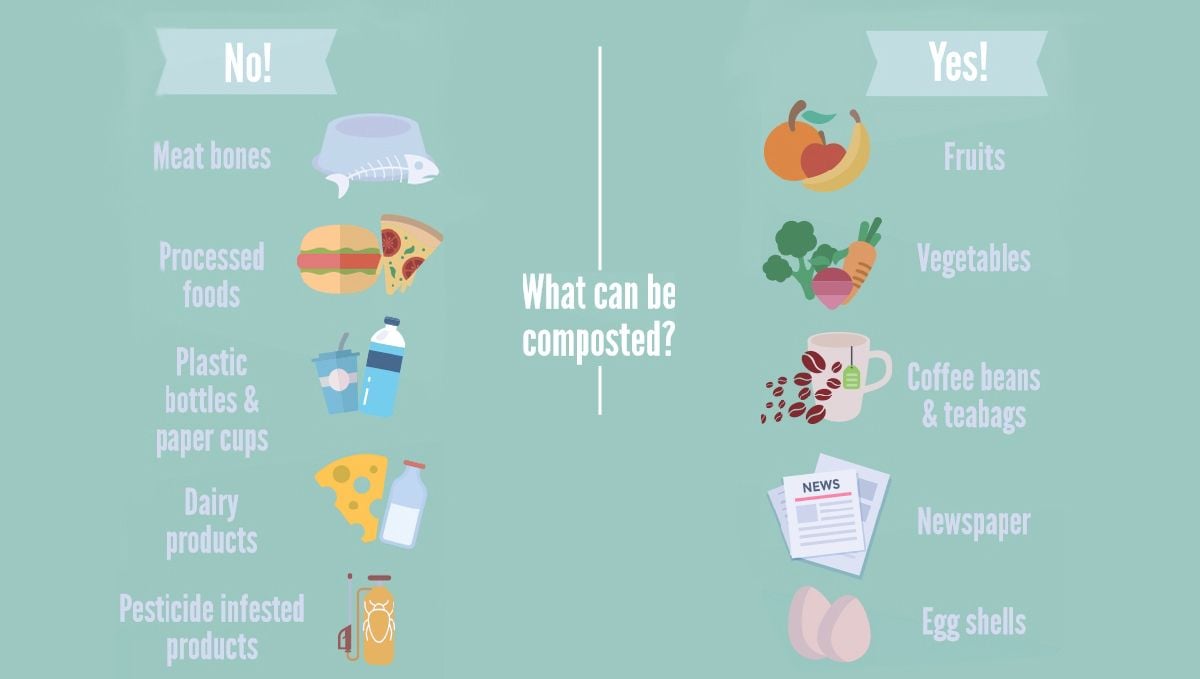
What NOT to Compost
- Meat bones
- Processed foods
- Plastic bottles or paper cups
- Dairy products
- Pesticide infested products
What to Compost
- Fruits
- Vegetables
- Coffee bins and teabags
- Newspapers
- Egg shells
What goes into the compost mix is what enriches the cannabis super soil for you not to have to add extra nutrients later on. It’s important to try to keep the materials you mix balanced. This will guarantee that the microorganisms that will break down the compost have an optimal microenvironment to be in.
We have two main categories of material that make up compost:
Green Material: which can include grass clippings, green leaves, and fruits and vegetables.
Brown Material: can be made up of woodchips, dead leaves, paper, cardboard, and straw.
The heap of compost should be comprised of 25-50% Green Material, and 50-75% remaining being Brown Material.
3-Bin System
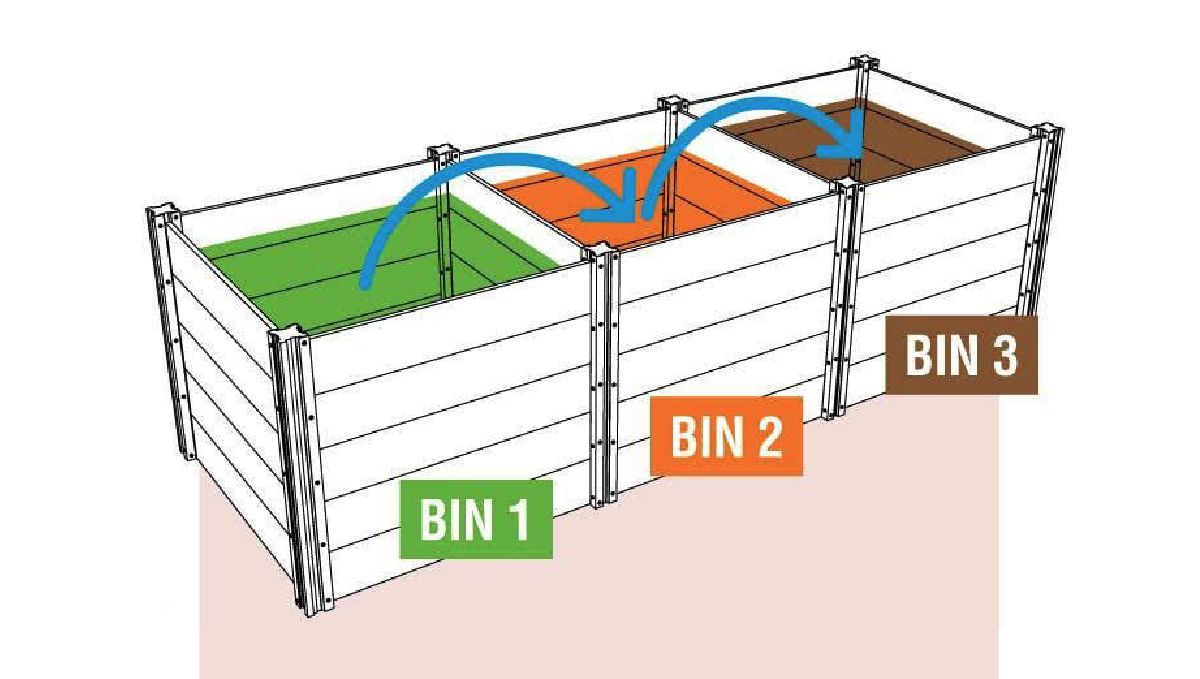
The materials inside the bins don’t require too much work. The microorganism do the rest, however, mixing around the material manually does help speed the process. A pitchfork can be used and it should be done every few weeks. This gives air to the ecosystem you are cultivating and helps the matter decompose. Worms are a great incorporation to the ecosystem to maintain humidity and turn into strong compost. You would place the worms and the Green Material in the upper area of a bin, it is where the worms work to compost organic material, and the lower compartment serves to collect the refined compost. Worm compost is not a replacement of conventional compost, but rather serves to further boost the nutritional value of your compost.
pH value and moisture levels need to be monitored closely when composting with worms. Ideally, temperatures will be 18–25°C and the pH between 6.5 and 7. Smell and can be avoided by covering from rain, airing and avoiding too much humidity. The opposite of this state can also be a problem. When the mix becomes too dry, little decomposition is occurring. If this happens, add more green material to the mix.
This type of composting is ready after 6 months and can extend depending on the climate. Good things come to those who wait. Good things, being beautiful cannabis plants to cherish. Even better things, if they are autoflowering cannabis plants. Nothing compares to the flavor of properly grown organic weed when it's done in cannabis super soil. As with your grandparents vegetable garden, rich organic soil can bring the best in cannabis.
What's next?
So now you're ready to start growing your own supply, but you're not sure where to start. Searching on the internet seems to lead to an endless variety of choices regarding how, when, and where to grow your weed.
Try what you learned by using one of new strains:







